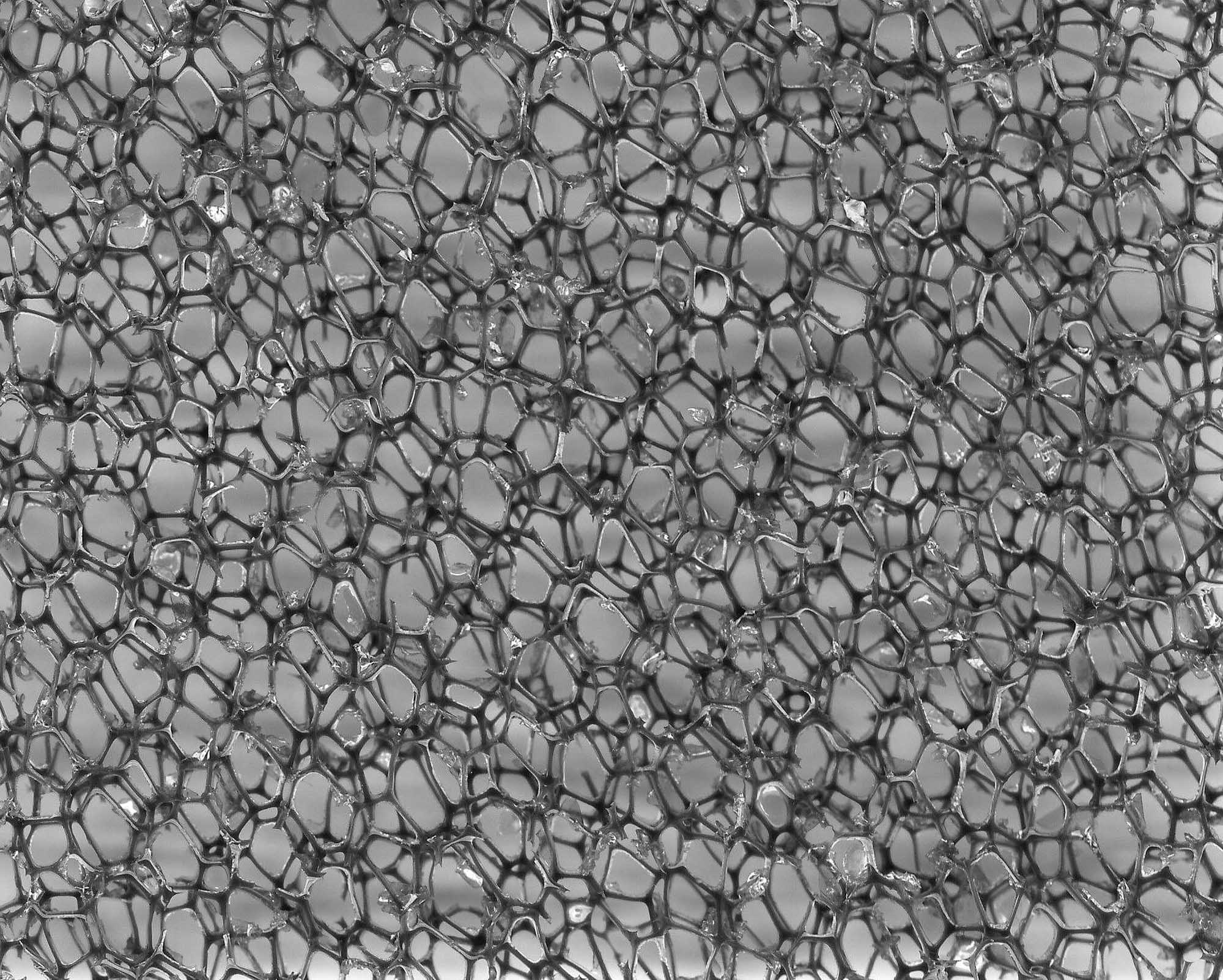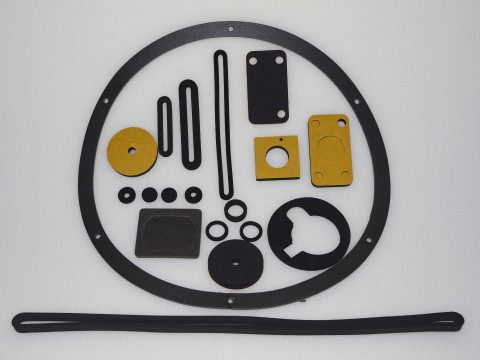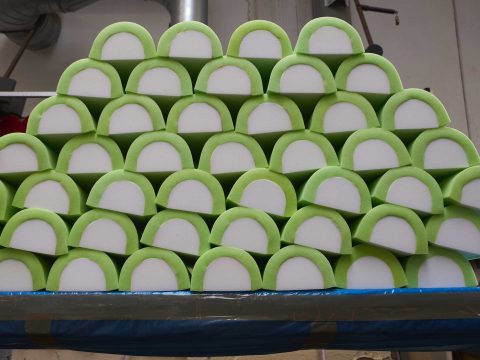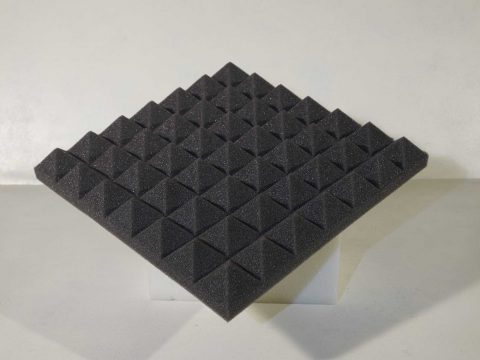There are many filtering media that are used at the industrial level. Imar s.p.a. has a very well-stocked warehouse with all the different types of products, and a wide range of machinery to reach the desired shape starting from the block of raw material. Let’s look at these in detail.


Cross-linked expanded polyurethanes
There are many filtering media that are used at the industrial level. Imar s.p.a. has a very well-stocked warehouse with all the different types of products, and a wide range of machinery to reach the desired shape starting from the block of raw material. Let’s look at these in detail.
Cross-linked expanded polyurethanes
Polyurethane foam has a structure of side-by-side cells that lends itself to a variety of applications, depending on whether these take advantage of their elastic, mechanical, insulating or absorbent properties, or simply of their shape and size.
In particular, formulations have been studied that allow one to obtain a calibrated and controlled cell size, so as to obtain relatively homogeneous materials (in the field of expanded materials, a certain variability must always be taken into account); therefore, we have foams characterized by an extremely large cell, with a largest diameter of about 5 millimeters, and others that instead have a largest diameter measuring only 0.5 millimeters.
A thermal process applied to the block that is already formed and stabilized allows one to “melt” the walls that normally partially close the cells of traditional polyurethanes, leaving only the lattice; as a result, the material becomes perfectly permeable to fluids, whether gas (air) or liquid, which can cross it freely, with the sole constraint being the cell size (for liquids, it is therefore necessary to take into account the surface tension).
At this point, we must distinguish between the two large families into which polyurethanes are divided, ether-based and ester-based, depending on the polyols used in the formulation of the material.
Ether-based polyurethanes are not subject to hydrolysis, and therefore can be immersed in water for a very long time without undergoing chemical degradation and releasing components; they are used for water filtration, and in particular for aquariums.
Ester-based polyurethanes, on the other hand, are subject to hydrolysis, but have a higher resistance to other chemical elements and have better mechanical properties in general, such as tear and abrasion resistance, allowing one to obtain thinner cell structures and offering a range of delayed combustion products that pass the MVSS 302 test. Therefore, they are normally used for air filtration (for example, household appliances or automotive uses are the main fields of application).
The blocks of filtering polyurethanes are not very large, maximum 2000 x 1500 x 500 mm, and are suitable for multiple types of processing, such as, for example, cutting into sheets, shaping, die-cutting and milling; then, they can be assembled by gluing, stitching or welding in order to obtain a complex finished product.
Fibers and nonwovens
These are products that are generated starting from fibers, PET or polyester in large part, which are spread on a moving carpet and fixed together.
The spreads on the carpet can be multiple, so as to form a more or less thick layer, while the bond between the fibers can be provided by a synthetic resin (resin) or by a thermal process whereby one of the fibers that make up the layer passing in a temperature-controlled oven it folds and adheres to the others (thermo-bonded).
The aquifer thus obtained can undergo a final needling process, which thickens the fibers on one or both sides, lowering the starting thickness.
According to the quantity and typology of the material used, the method used, the starting fiber (diameter of each single fiber) and the needling, a multitude of products are obtained that are suitable for the most diverse applications, from clothing to padding of cushions and sofas, and of course to the more or less refined filtration of air and water.
The material is generally presented in rolls and can be cut, punched and sewn or glued.



